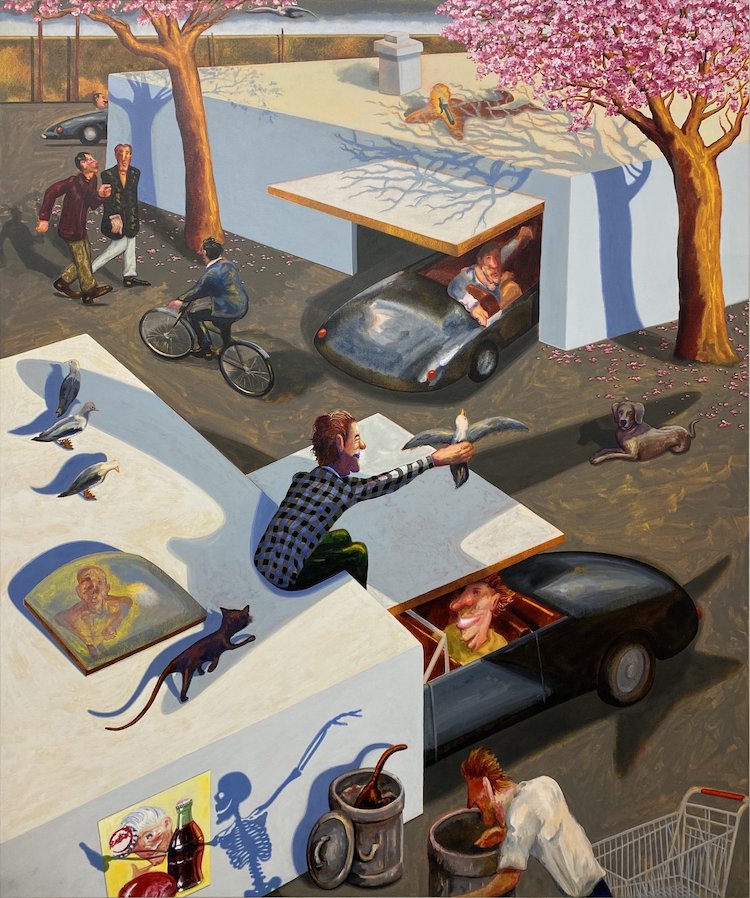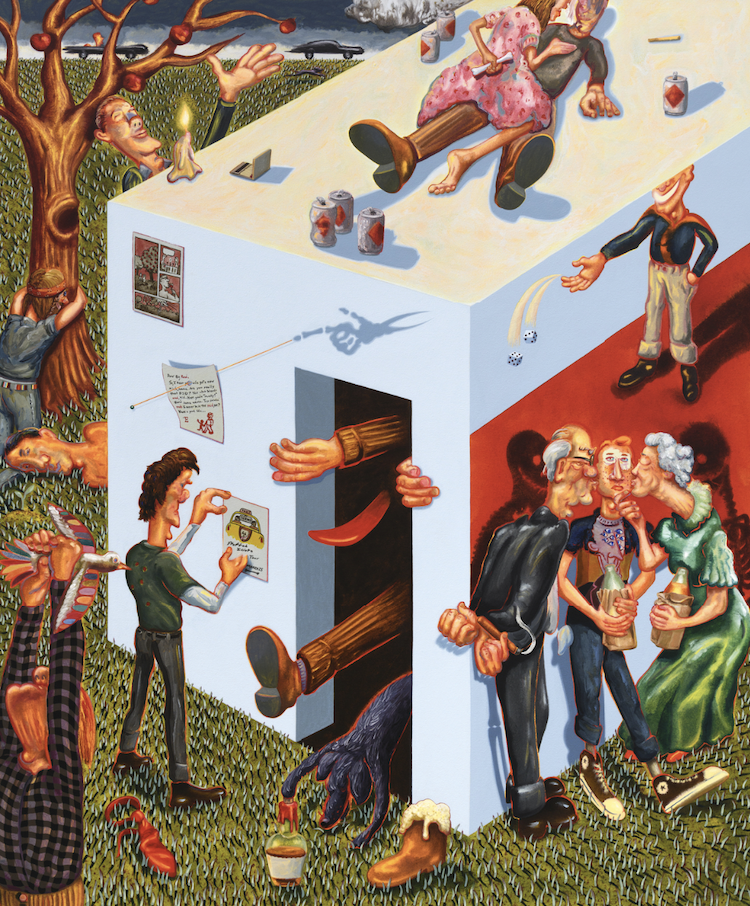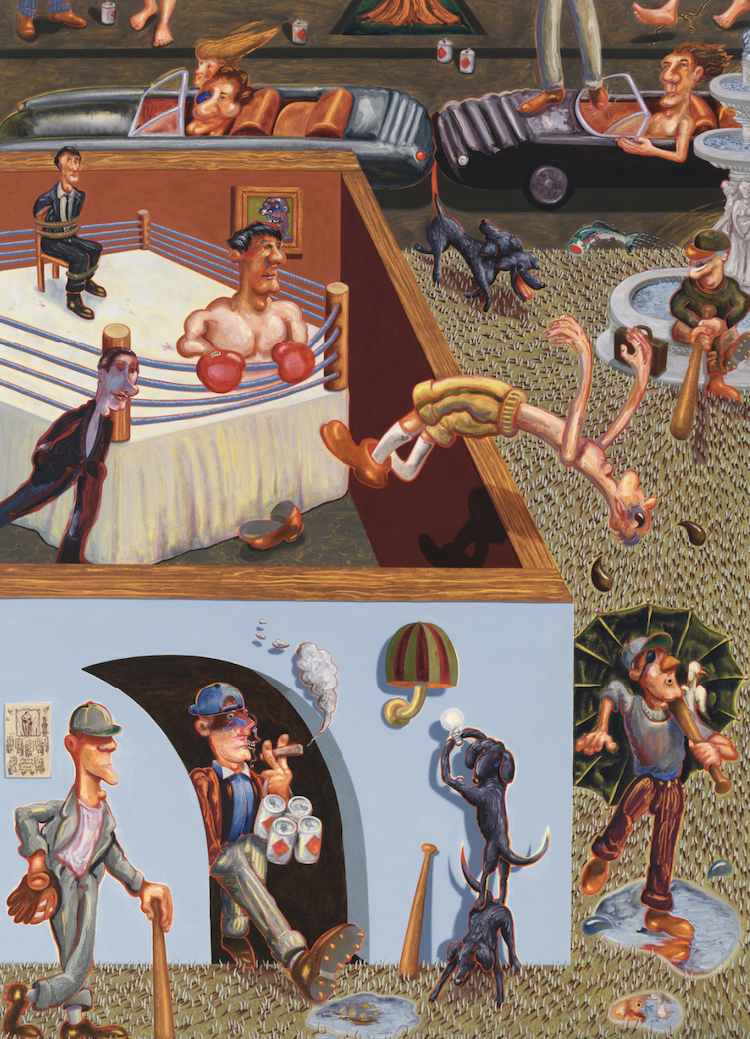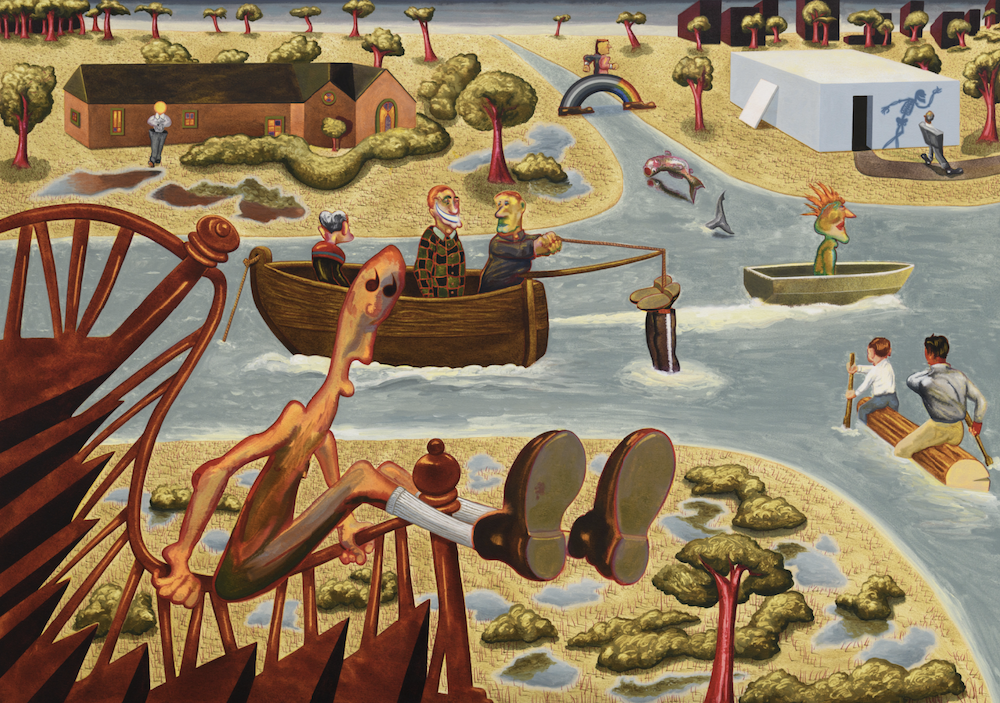Jackson Casady's new body of work depicts vibrant scenes populated with figures venturing into chaotic worlds and landscapes that appear familiar, yet are fundamentally distorted and surreal. These cinematic imaginings reveal wistful, peculiar, and playful narratives, where Casady continues to explore his interest in eccentric imperfections, foibles, and idiosyncrasies. The pictures often employ magical thinking, film influences, and embellished allegories within complex compositions that use surprising, dynamic perspectives. His new show, Roadside Picnic, is now on view at Richard Heller gallery in Santa Monica.
Each work portrays a rich melding of industrial and natural, human and ethereal. Casady cites some of this conceptual influence from Andrei Tarkovsky's 1979 film, "Stalker," where three men embark on a journey into an area known as the "Zone," in which there is a "room" that grants those who visit it their innermost desires. From this idea of the "room," Casady makes an analogy to the artist's studio space and sees the studio, the "bunker," as a place of its own creation, safe and ordered. Even though chaos surrounds the icy blue solitary boxes, the architecturally minimal studios remain humble havens. They appear universal, ubiquitous and yet implicitly foreign, recalling the idealized cement structures of Le Corbusier and the deconstructed ghost cabins of Rachel Whiteread. Thus, the boxes represent a sacred space, a symbol of hope, inspiration, and discipline in a society struggling with cynicism and order.
Blooming cherry blossoms, flowers, and sharp, fresh grass are juxtaposed with skeletal shadows cast from living bodies. The shadows recall Alice Neel's cityscape "107th and Broadway," and carry with them an ever-present memento mori. Stylistically the work bends toward cartoon surrealism or, as Casady has coined, "botched realism," a term referencing bad plastic surgery. The figures either desperately need cosmetic surgery or have had way too much of it, generating a tension in their appearances. This style distorts a Norman Rockwell idealism and pushes the characters into strange and funky territory where the exaggerated figures take on loose and cartoonish qualities, seemingly human but not quite made of the same stuff.
Casady's work continues to ricochet between ordinary and extraordinary, between hyper reality and warped fantasy within its own intensely sunny and satirical spirit.













